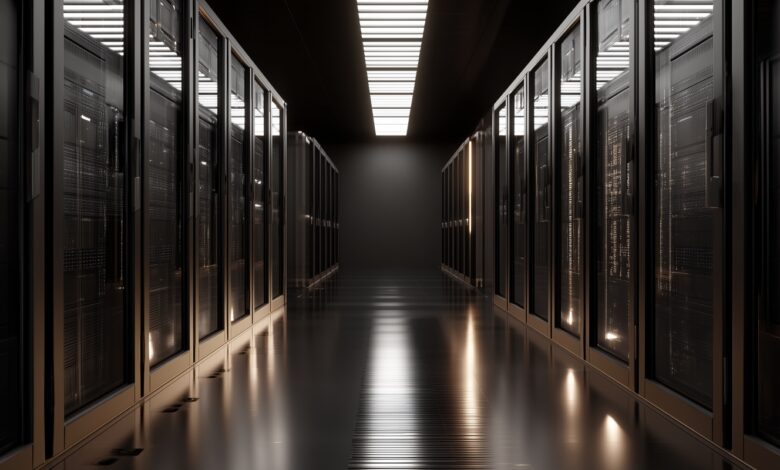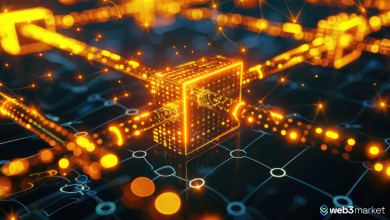
As AI revolutionizes nearly every industry, greater data center capacity is needed to reshape the commercial real estate market. The computational demands of AI models, particularly in areas like machine learning and natural language processing, require powerful servers and massive storage capacities–which can dramatically reduce the lifecycle of existing data centers.
PGIM Real Estate’s recent announcement of securing $2 billion for its global data center fund is one of the latest examples of this rapid development. Because 95%-98% of a data center’s total carbon comes from the operational phase, developers must prioritize data center design that optimizes the operations of these energy-intensive facilities.
The Case for DC Power Systems in Data Centers
As demand for computing power increases, energy efficiency of data centers becomes a critical focus. Adopting DC (direct current) power systems offers notable advantages over the traditional AC (alternating current) systems that have long been the industry standard.
Most building MEP systems are developed to coexist with alternating current (AC) power. However, converting all of a building’s systems to DC power increases efficiency by eliminating conversion loss. It allows them to directly utilize the stored energy from renewable sources like solar panels.
DC infrastructure also supports more intelligent, integrated building systems. By allowing power and data to run on a single cable, smart sensors and controls can work in tandem with AI, giving building operators more sophisticated tools for monitoring and optimizing energy in real-time and making the network more efficient.
AI algorithms can analyze massive amounts of data generated by the connected equipment and sensors throughout the grid. These technologies can predict demand fluctuations, optimize energy distribution, and anticipate future maintenance needs, reducing downtime and improving reliability. For example, during peak energy demand times, the building can adjust the flow of electricity in real time to redirect wasted power and reduce potential strain on vulnerable areas, lowering the risk of blackouts and preserving battery stores.
Smart Building Technology: The Digital Backbone of Efficiency
Modern sustainable data centers are more than just physical assets—they’re digital ecosystems. Smart building technologies are transforming how these facilities are managed and optimized. Automated HVAC, LED lighting, and power distribution systems help reduce energy consumption without compromising performance.
Another benefit of this automation is the intelligent and responsive regulation of temperature. This feature is particularly important for cooling the facility, which requires a great deal of energy. Autonomous resource allocation mitigates this issue, delivering power where it’s needed most.
Integrating data analytics within intelligent building systems enables a new level of performance optimization. Facility managers can gain detailed insights into energy usage, space utilization, and environmental conditions. This data-driven approach supports predictive analysis, allowing for more strategic decision-making.
For example, analyzing HVAC usage patterns can help optimize system schedules, while occupancy data can inform space planning and reduce over-provisioning of resources. These minor adjustments, powered by big data, add significant energy and cost savings over time.
These systems also allow remote monitoring, an essential competitive advantage for data centers hosting multiple AI workloads. Through sensors and analytics platforms, facility managers can track performance in real-time, identify inefficiencies, and implement adjustments remotely. This methodology reduces the need for on-site staffing while increasing responsiveness and resilience.
Advanced automation systems can even predict equipment failures before they occur, using machine learning algorithms to flag anomalies in operation. This proactive maintenance reduces downtime, extends equipment life, and optimizes resource allocation.
The Broader Impact on Commercial Real Estate
The influence of smart building technologies extends well beyond data centers. Across the commercial real estate sector, smart technologies are becoming essential tools for energy efficiency, tenant engagement, and asset optimization.
For example, centralized control platforms allow property managers to oversee multiple buildings from a single dashboard. This streamlines operations and provides for portfolio-wide strategies in energy usage, security, and maintenance.
Smart technologies also enhance tenant experiences through features like personalized environmental controls, smart access systems, and mobile service apps. These tools improve comfort and foster long-term tenant retention—a key consideration in competitive real estate markets.
Retrofitting for Resilience in an AI-Driven Era
As AI accelerates the need for robust and efficient computing, many existing data centers face obsolescence—not because they lack space, but because they weren’t built to handle today’s energy densities or thermal loads. Retrofitting offers a path forward, allowing legacy facilities to remain viable while meeting evolving performance and sustainability standards.
Rather than replacing entire systems, strategic retrofits focus on high-impact upgrades. Enhancing cooling infrastructure, reconfiguring rack layouts for better airflow, and integrating energy-efficient power distribution systems can significantly improve operational performance. These targeted interventions reduce energy waste and help mitigate the mechanical stress placed on critical equipment by newer AI-intensive workloads.
Retrofitting also plays a key role in prolonging the lifespan of a facility. Developers can extend a data center’s useful life without undertaking a complete rebuild by aligning existing assets with modern design standards, such as modular layouts or DC-ready electrical systems. This process supports long-term asset value and allows operators to incrementally adopt new technologies as needed.
Importantly, retrofits are a chance to design with adaptability in mind. As AI workloads evolve, so too will the demands on physical infrastructure. Future-ready retrofits ensure that today’s improvements don’t become tomorrow’s limitations.
Embracing Sustainable Design for the Future of Data Storage
As the demands of AI continue to accelerate, commercial real estate developers are pressured to create high-performing and sustainable data center infrastructure. Smart building technologies offer powerful tools to optimize operations, reduce environmental impact, and future-proof investments.
By embracing flexible design principles, prioritizing renewable energy integration, and leveraging the full potential of digital analytics, developers can meet the moment and lay the foundation for the next generation of sustainable data centers.




